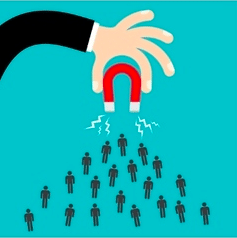Who are your best customers? As the solar market reels, it pays to know

For the next few months, the US solar market will continue to be in a state of uncertainty as the “One Big Beautiful Bill” gets amended, reworked and possibly passed through Congress. The barrage of news on the on-again, off-again solar tariffs doesn’t help. In such a precarious market, solar and other clean energy companies may be feeling the need to take drastic cost-cutting measures. Is this the right thing to do?
The temptation is understandable. But one strategy that may not seem obvious can separate you from the panicking mob: Instead of focusing inward and taking a machete to your operational expenses, look outward and focus like never before on your best customers.
Ignore your best solar customers at your own peril
Why? Because your best customers are the ones who are consistent, loyal and share your values. They want what you want: for the energy transition to succeed. And they’re a powerful part of your business strategy.
A recent study reported in Harvard Business Review analyzed a large cohort of leading consumer companies and found that cutting costs alone does not deliver increased margins unless it’s combined with a strategic focus on finding the right customers.
Efficiency matters, certainly, but the data strongly suggests that businesses can’t rely solely on cost-cutting to flow to the financial bottom line and thus deliver superior long-term returns.
–Harvard Business Review
Plenty of companies cannibalize their own when times are tough. Instead of finding and cultivating the best customer segments, they take what feels to be the obvious route: Cut costs and offer discounts to everyone. That might generate cash in the short term, but over the long run those brands become diminished, commoditized, and eventually, irrelevant.
The report cites other examples of companies who did the work, found their most profitable customer segments, studied them, learned to find more of them, and cultivated those segments into long-term value growth.
At this point you might be saying, ok sure, that may be true with consumer products. But solar is a different kind of product. It’s not a repeat purchase. Battery backup products and service packages notwithstanding, there aren’t a lot of “add-on” sales in our industry.
Solar is different, but it is still critical to understand your best solar customers
Cultivating your relationships with your best customers is especially crucial these days, when trust in the residential solar market needs rebuilding, and expansion to commercial customers is an enormous opportunity that must be handled with care.
Here are two more reasons why zeroing in on your best customers makes sense:
- Your best customers fill your pipeline with referrals. In a world of influencers and social media savants, a referral to your business is manna from heaven. Many solar companies we work with have found that referrals are the #1 driver of new solar sales. So it pays to keep your customers happy.

- Your best customers are powerful solar advocates. They’re vocal about their satisfaction (and often about their dissatisfaction, too). In times like these, we need all hands on deck to protect our rights to energy independence, to protect tax incentives, jobs and keep the energy transition moving forward at full speed.
So where do you find your best customers?
Your top-tier customers share your belief in the promise of renewable energy. They don’t just talk the talk, they walk the walk. If you look closely and carefully, you’ll find that your best customers are hiding in plain sight. Where?
• In your sales data. We often think we know our best customers because they are vocal. But take a closer look. Generate a report from your CRM or sales system of your biggest sales, and then look at sales of solar + battery backup. Those are the first best customers. Someone who came back to you when you installed solar for an add-on product, especially customers who date back several years.
• In your service data. Many solar companies make the mistake of deemphasizing service as an offering. But a customer who has had a problem solved by your company – both those whose systems you installed as well as “orphans” from companies who’ve gone out of business – can be powerful allies and advocates for your business.s.
• In your referrals. Knowing which customers refer the most people isn’t enough. Track those referrals all the way through to make sure the referrals you’re getting are actually turning into sales. Then incentivize the folks who are delivering more valuable referrals, with higher level incentives, gifts of branded merchandise, or an even more formal partnership or cross-marketing program.
• In your reviews. Google reviews and reviews on systems like Energy Sage continue to drive business. That’s why boosting authentic reviews and responding to every one them is one of the most powerful strategies you can employ.
Reinvest in your best customers and the benefits will come in the form of more great customers, attained more efficiently.
Prospects read and watch case studies! It’s the one way to relate their needs with your offerings, minus all the fluff. A quick customer video testimonial or case study, or shared reel on social media can be more powerful than any other form of marketing you can do.
When times are tough, it can be tempting to cut back on your operations wholesale. And efficiency is always good. But identifying and supporting your best customers is a winning strategy to make sure our industry, and your company will thrive, today, tomorrow, and long into the future.
As always, reach out to the team at Clean Power Marketing if you need help with this process, or any other marketing efforts on your behalf. We’re here to help.
Stay in touch
Get information just like this in your inbox.
Unsubscribe at any time
About the Author

Nancy Edwards
Founder/Managing Partner
Nancy Edwards is founder and managing partner of Clean Power Marketing.
Ready to Power Up Your Marketing?
At CPM, we work with the game changers, the innovators, the leaders tackling the planet’s most urgent environmental challenges. If you’re one of them, we’d love to collaborate with you.
